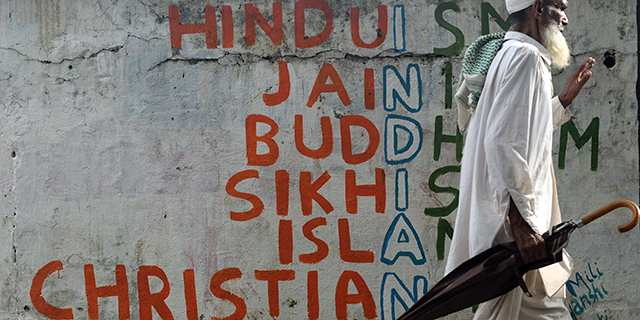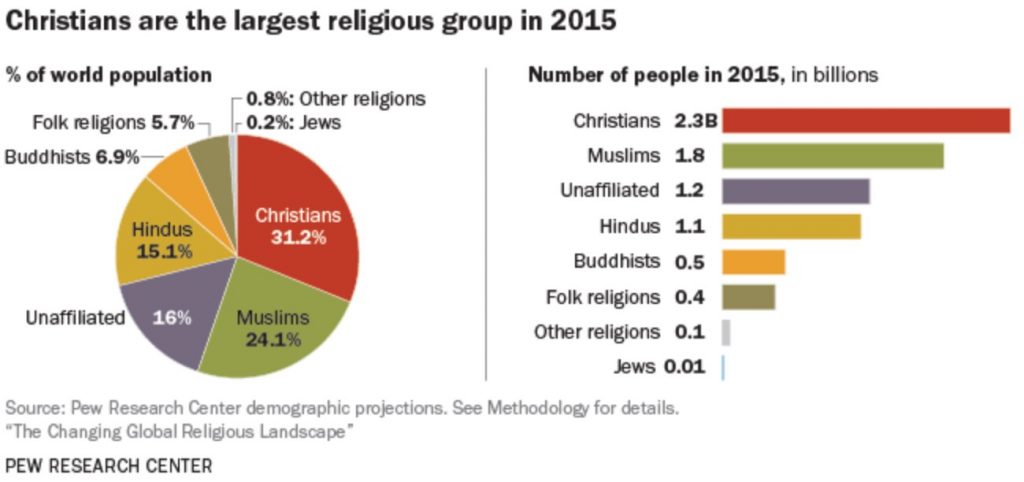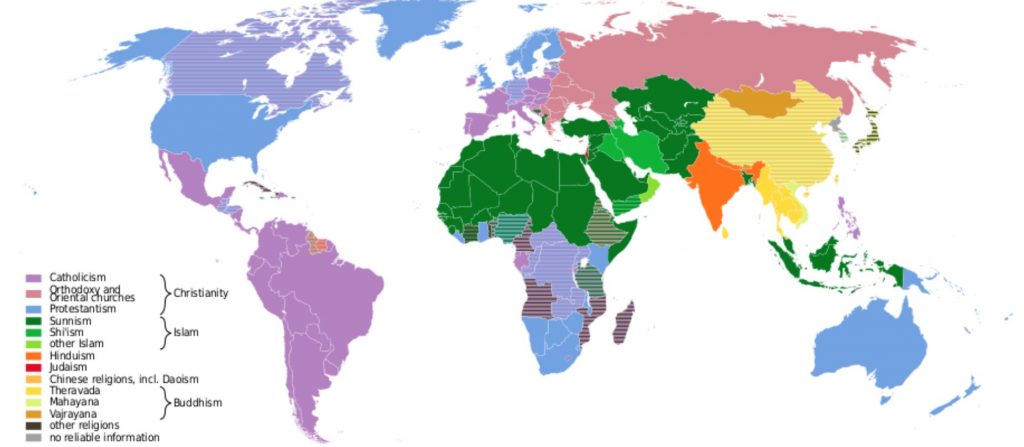“No one is born hating another person because of the colour of his skin, or his background, or his religion. People must learn to hate, and if they can learn to hate, they can be taught to love, for love comes more naturally to the human heart than its opposite.”
– Nelson Mandela[1]
In the social context, the dictionary[2] defines a minority as:
- A racial, religious, political, national, or other group thought to be different from the larger group of which it is part.
- A group having little power or representation relative to other groups within a society.
In the Roman Empire of 380 C.E., despite Christians being in a minority, Emperor Theodosius declared Rome a Christian Kingdom. Christianity was made the only legal religion in the empire. The emperor ordered all pagan temples to be destroyed and anyone remotely suspected of practicing paganism or performing pagan rituals was to be killed[3]. Two hundred years later, Emperor Justinian outlawed pagan philosophy and closed down the Platonic Academy. Paganism was thus completely eradicated from the West.
In South Africa, a minority of White Protestant Christians ruled the country with an iron hand, imposing a barbaric system of apartheid. These White Protestants were the residue of 200 years of colonialism. Apartheid was only abolished in 1994 C.E. after a long, historic struggle of the black majority led by people like Nelson Mandela.
Numerical majority in a country means nothing if a minority holds all the power.
The plight of minorities in India
When it comes to India, minority politics has been a hot topic ever since certain political powers took it upon themselves to appear as the saviors of Indian minorities. It may be interesting to delve into the idea of a minority in terms of who holds the reign of power in today’s Indian society. The official definition includes Muslims, Christians, Buddhists, Sikhs, Parsis and Jains[4].
Culturally, there are some points of unity between the minorities of the Indian subcontinent and the Hindus. On the whole, Indian minorities tend to follow the cultural mores of the region to which they belong. For example, a Muslim from Tamil Nadu might have culturally more in common with a Hindu Tamil than with a north Indian Muslim. Even in the Islamic republic of Pakistan, the past sixty odd years has shown cracks in unity between the major ethnicities, namely Sindhis, Pashtuns and Punjabis.
Indian minorities also have no shortage of political power and representation. Both Muslims and Christians are well represented in politics[5]. There have even been two Muslim Presidents of India. Alongside this, the Indian government has generously provided extraordinary benefits to minorities under the aegis of minority welfare[6]. For example, among the schemes[7] includes an interest rate subsidy[8] for education loans. Another example is the Right to Education act (RTE) which provides lavish subsidies to minority education institutions at the expense of Hindu-run schools[9]. Thus, the Indian tax payer today subsidises many government programs that go towards minority welfare.
The global context
Especially with the onset of globalisation, the world is more connected than ever before[10]. There is no real value in restricting our viewpoint to a limited geographical area. In fact, the minorities of India have made no qualms about this. Delegations have gone from India to the US to complain about alleged problems being faced by Indian Christians[11]. When it comes to Muslims, Pakistan has repeatedly helped the separatists of Kashmir in various ways. Also, Arabs and others have freely joined forces with fellow Muslims in Afghanistan and other war-prone places.
Further, both Islam and Christianity are universalist by nature. Universalism can be described as the idea that a doctrine or set of practices should be applicable to everyone on the planet. The goal of Islam and Christianity is to erase all diversity and impose a monoculture. If Islam was to have its way, everyone from Jeddah to Brisbane would pray and dress in the same way. Also, Muslims in Saudi Arabia, for instance, are compelled to look out for the interests of Muslims in Indonesia. Similarly, Christians in the US, for example, are compelled to look out for the interests of Christians in India. Both Christians and Muslims have a worldwide support network whenever they are faced with any problem.
As of 2015, there exist 1.1 billion Hindus on planet earth, most of whom reside in India. So, it can be said that for Hindus, India is the only true homeland. On the other hand, 1.8 billion Muslims form majorities in 49 countries[12]. 2.3 billion Christians of the world form majorities in 157 countries[13]. While there are around 37 Christian and 26 Islamic states, there are zero countries which profess Hinduism as the official religion as of today.
A look at a religious map of the world shows that the dharmic religions (Hinduism and Buddhism) form the only major bulwark against total global dominance by the Abrahamic religions (Islam and Christianity). So, Hindus truly form a minority on the world stage in terms of population and geography.
| Rank | Country with Christian majority | GDP (billions)[14] | Share of world GDP | Nuclear Warheads[15] |
| 1 | United States | $20,412.87 | 23.30% | 6600 |
| 2 | Germany | $4,211.64 | 4.81% | |
| 3 | United Kingdom | $2,936.29 | 3.36% | 215 |
| 4 | France | $2,925.10 | 3.34% | 300 |
| 5 | Italy | $2,181.97 | 2.49% | |
| 6 | Brazil | $2,138.92 | 2.44% | |
| 7 | Canada | $1,798.51 | 2.06% | |
| 8 | Russia | $1,719.90 | 1.97% | 6800 |
| 9 | Spain | $1,506.44 | 1.72% | |
| 10 | Australia | $1,500.26 | 1.71% | |
| 11 | Mexico | $1,212.83 | 1.39% | |
| 12 | Switzerland | $741.69 | 0.85% | |
| 13 | Argentina | $625.92 | 0.72% | |
| 14 | Poland | $614.19 | 0.70% | |
| 15 | Sweden | $600.77 | 0.69% | |
| 16 | Austria | $477.67 | 0.55% | |
| 17 | Norway | $443.25 | 0.51% | |
| 18 | Ireland | $385.14 | 0.44% | |
| 19 | Denmark | $369.76 | 0.42% | |
| 20 | Philippines | $332.45 | 0.38% | |
| 21 | Colombia | $327.98 | 0.38% | |
| 22 | Finland | $289.56 | 0.33% | |
| 23 | Chile | $280.27 | 0.32% | |
| 24 | Portugal | $248.89 | 0.28% | |
| 25 | Romania | $245.59 | 0.28% | |
| Total | $48,527.86 | 55.43% | 13915 |
| Rank | Country with Muslim majority | GDP (billions)[16] | Share of world GDP | Nuclear Warheads[17] |
| 1 | Indonesia | $1,074.97 | 1.23% | |
| 2 | Turkey | $909.89 | 1.04% | |
| 3 | Saudi Arabia | $748.00 | 0.85% | |
| 4 | Iran | $418.88 | 0.48% | |
| 5 | United Arab Emirates | $411.83 | 0.47% | |
| 6 | Malaysia | $364.92 | 0.41% | |
| 7 | Pakistan | $324.73 | 0.29% | 130 |
| 8 | Bangladesh | $285.82 | 0.29% | |
| 9 | Egypt | $253.25 | 0.29% | |
| Total | $4,792.29 | 5.35% | 130 |
As shown in the above two tables, the top 25 countries with Christian majorities have 55% of the world GDP with a combined total GDP of $48.5 trillion. There are also around 13000 nuclear warheads in total among these countries. The top 9 countries with Muslim majorities have a total $4.7 trillion combined GDP, with Pakistan being the only nuclear armed Islamic country with 130 nuclear warheads. Thus, on the world stage, Christians and Muslims are also well-equipped in terms of money and military power.
The Hindu situation
The Hindus of the Indian subcontinent today occupy a unique place in the world. They represent perhaps the last civilisation where an indigenous human tradition has survived intact for more than 5000 years. Even 1500 years ago, the situation was vastly different. A diverse array of local cultures, traditions and practices could be seen across Europe, Asia, Africa and the Middle East. Abrahamic religions wiped out many of such local ancient, indigenous, polytheistic traditions. Hinduism, Buddhism, Shintoism, Taoism and other Eastern traditions today survive in only a few countries such as India, Thailand, Japan etc.
Presently, Hindus face an existential challenge in the Indian subcontinent. In the Islamic republics of Pakistan and Bangladesh, Hindus face incredible hardships every day. Hindus in Pakistan have been reduced from being 12.9% of the population in 1951 to just 1.85% in 2014. Hindus have been ethnically cleansed from the Kashmir valley[18] and many temples have been destroyed[19] since 1990. In Christian majority states in North East India, the indigenous culture is slowly being erased[20]. In Kerala, the triple threat of Muslims, Christians and communists have made life difficult for the average Hindu[21].
Hindu rituals, customs and practices are today the subject of ridicule and contempt from much of the mainstream media[22] and judiciary[23]. Thus, Hindus of India are today faced with unique problems with little political will to support Hindu culture. The currently ruling Hindu nationalist BJP has been remarkably reticent in backing schemes to help Hindu culture. A prominent example is the Ayodhya Ram Mandir which has not been built (as of September 2018) in spite of wide public support.
Hindus lack a worldwide support network and have little to no protection from any government in the world. Thus, in spite of being in a numerical majority in India, Hindus of India are a minority with respect to both:
- lack of power in India and
- global religious population demographics
Of course, Indic minorities such as Buddhists, Sikhs, Parsis and Jains are in the same boat as the Hindus. It would be a real loss to humanity if an indigenous system such as Hinduism is erased from this planet. All the unique Hindu aspects of Hindu culture should receive recognition and protection from the Indian government and should be taught at all levels of education, including:
- rituals
- scriptures
- practices
- places of worship
- festivals
- philosophy
From the point of view of the Indian state, protecting and propagating Hinduism and other Indic and indigenous systems appears to be the best way to ensure fairness and justice in the long term.
References
[1] Nelson Mandela, Long Walk to Freedom (1995)
[3] Edward Gibbon, The History of the Decline and Fall of the Roman Empire (1781)
[4] Minority Affairs :: About the Ministry
[5] Islam in India – Law and politics
[6] Ministry of Minority Affairs
[7] Ministry of Minority Affairs :: Schemes
[8] Ministry of Minority Affairs :: Schemes :: Padho Pardesh
[9] Let’s Stop The RTE From ‘Doing An RTE’ On India
[10] Thomas L. Friedman, The World Is Flat (2005)
[11] Concerns in U.S. about religious freedom in India
[12] Pew Research Center: Muslim Majority
[13] Pew Research Center: Christians
[19] List of Temples Destroyed by the Islamic Terrorists
[21] Kerala and South Tamil Nadu – A Case of Hindu Fade Out
[22] Misrepresentations of Hinduism in the Media; How Bollywood Targets The Hindus
[23] Supreme Court bans Dahi Handi; Supreme Court bans Diwali firecrackers in Delhi
Featured Image: Pew Research Center



